It looks like you're using an Ad Blocker.
Please white-list or disable AboveTopSecret.com in your ad-blocking tool.
Thank you.
Some features of ATS will be disabled while you continue to use an ad-blocker.
share:
The story of Edin is without doubt one of the earliest recorded, it's setting will pre-date the establishment of Uruk, which dates back some 7,000
years, here i will establish the context for the story, and suggest the location of the Great Apple Tree that lies at the Heart of the story.
First the general location of Edin needs to be established;
www.bibleorigins.net...
The Edin then was uncultivated plain in central Sumeria, located between the Tigris and Euphrates, the dominant city of the region was Uruk, city of the pastoralists.
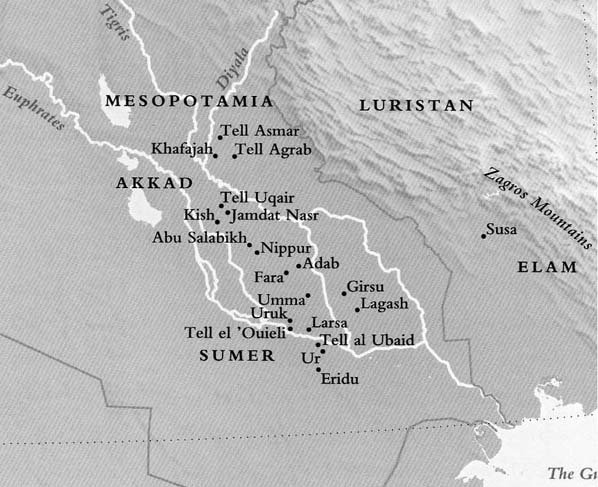
As Uruk was the sacred City of Inanna, she held the titles nin edin "the lady of edin" and Inanna edin "Inanna of edin." , as recorded in Temple hymns of Nippur.
Before determining the location of the Great Apple Tee of Edin, it will be best in my opinion to glimpse the manner in which sacred trees were regarded in Sumeria, the starting point for that has to be the sacred tree of the Lady of Edin.
Once upon a time, a tree, a huluppu, a tree --It had been planted on the bank of the Euphrates,It was watered by the Euphrates --

The violence of the South Wind plucked up its roots,Tore away its crown,The Euphrates carried it off on its waters.
The woman, roving about in fear at the word of An,Roving about in fear at the word of Enlil,Took the tree in her hand, brought it to Uruk:"I shall bring it to pure Inanna's fruitful garden
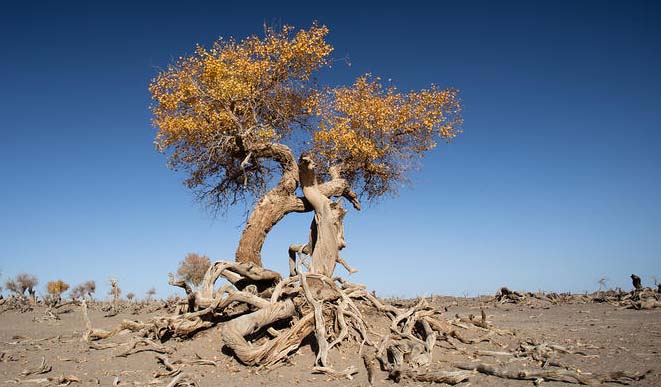
The woman tended the tree with her hand, placed it by her foot, Inanna tended the tree with her hand, placed it by her foot,
"When will it be a fruitful throne for me to sit on," she said,"When will it be a fruitful bed for me to lie on," she said.
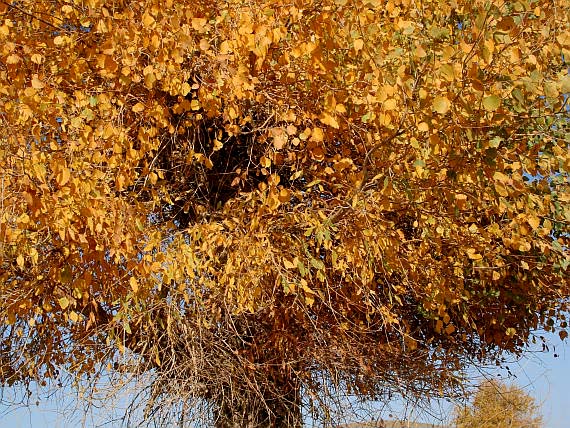
The tree grew big, its trunk bore no foliage,In its roots the snake who knows no charm set up its nest,In its crown the Imdugud-bird placed its young,In its midst the maid Lilith built her house --The always laughing, always rejoicing maid
,The maid Inanna -- how she weeps!

The sacred tree of Inanna then was the Euphrates poplar or Huluppu, this was understood as the MES tree of Inanna. In Sumeria the MES whether trees or written Tablet governed all aspects of Creation, the written functions were derivative of the natural world.
I, the queen, will look with wonder at the foliage. I, Inana, will gaze at the soft foliage. May my bridegroom speak to me ...... kindly words such as a farmer or a shepherd would speak.
I, the queen, will lie on the foliage. I, Inana, will run to the foliage. May they stand at my service
I will sprinkle water ....... I will make ...... shine. I will make my mes tree sprout forth
etcsl.orinst.ox.ac.uk...
The Apple tree within Edin was the MES tree of the Lord of Edin, Dumuzid, the husband of Inanna
My desirable one, my desirable one, your charms are lovely, my desirable apple garden, your charms are lovely. My fruitful garden of mes trees, your charms are lovely, my one who is in himself Dumuzid-abzu, your charms are lovely
etcsl.orinst.ox.ac.uk...
Good semen, good seed; when he comes forth from the brickbuilt abzu, I will make him sprout forth like a mes tree. Ama-ucumgal-ana, may An create ....... ...... shall supply you with ....... Your sweet beauty, like foliage ....... I shall cherish you ....... I will make Ama-ucumgal-ana sprout forth as just such a mes tree
Ama-ucumgal-ana is a descriptive title of the shepherd King Dumuzid.
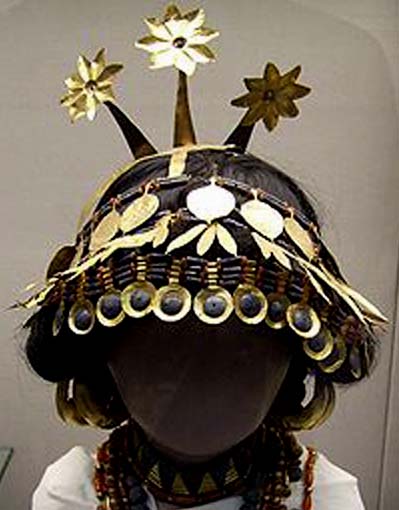
My lord is perfect for the holy embrace. Ama-ucumgal-ana, the son-in-law of Suen, lord Dumuzid, is perfect for the holy embrace. Ama-ucumgal-ana, son-in-law of Suen, my lord: how pleasing is your lavishness, and how sweet-tasting are your herbs and plants from the plain!
etcsl.orinst.ox.ac.uk...
As the Apple Tree is the MES tree of her husband Dumuzid, beloved of Heavenly Anu, Inanna kneels before it
Inanna spoke:
"He brought me into his garden.
My brother, Dumuzi, brought me into his garden.
I strolled with him among the standing trees,
I stood with him among the fallen trees
By the apple tree I knelt as is proper.

My brother-bearer, your allure was sweet.
My blossom-bearer in the apple orchard,
My bearer of fruit in the apple orchard,
Dumuzi-abzu, your allure was sweet."
The location of the Great Apple Tree of Dumuzid is revealed in the tale of Inannas descent into the Underworld. When she obtains her release a surrogate must be found to take her place, the seven Gallu demons accompany her as she seeks such, eventually coming upon her husband Dumuzid;
The Great Apple Tree was then in the Plain of Kulaba, some simply translate this as Uruk, as Kulaba was the central and oldest part of the City.
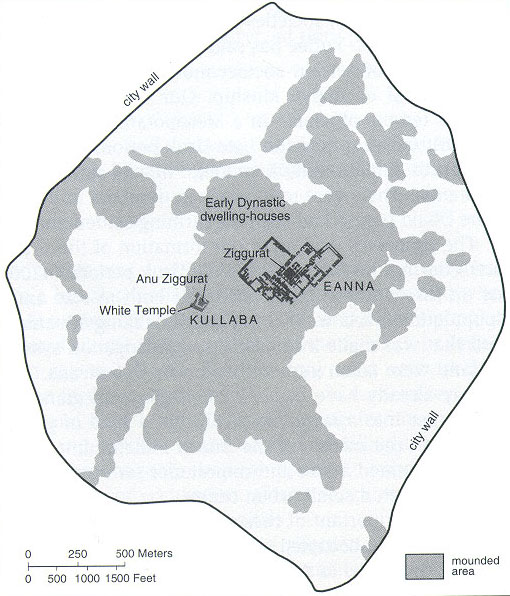
The Demons make off with Dumuzid and he is forced to spend six months of the year in the Underworld, his loving sister accomplishing the other six.
For our purposes then we can understand the Apple Tree was contained within the Kulaba Temple.
House with the great me’s of Kulaba, .(its) has made the temple flourish
O house with the great divine powers of Kulaba, ......, its platform has made the great shrine flourish. Green fresh fruit, marvellous, filled with ripeness, descending from the centre of heaven
From later times it can be determined that this tree was understood as the Tree of Life.
Tammuz has descended from Dumuzi, and Gizzida was a god of healing sometimes connected with the underworld. Gizzida was called Lord of the Tree of Truth, as Dumuzi-Tammuz was Lord of the Tree of Life -trees that were stars planted in heaven.
Edin and the Apple Tree not so difficult then to locate.
City, majestic bull bearing vigour and great awesome splendour, Kulaba, ......, breast of the storm, where destiny is determined; Uruk, great mountain, in the midst of ....... There the evening meal of the great abode of An was set. In those days of yore, when the destinies were determined, the great princes allowed Uruk Kulaba's E-ana to lift its head high. Plenty, and carp floods, and the rain which brings forth dappled barley were then increased in Uruk Kulaba. Before the land of Dilmun yet existed, the E-ana of Uruk Kulaba was well founded, and the holy jipar of Inana in brick-built Kulaba shone forth like the silver in the lode.
etcsl.orinst.ox.ac.uk...

First the general location of Edin needs to be established;
EDIN ("read" as Akkadian seru, seri, tseri) apparently has two meanings. Firstly, it means "back" or "upper side," and secondly, by analogy, the uncultivated steppe land that abuts the cultivated and watered lands was envisioned as "the back," (the backland or hinterlands, the wilderness, or the wilds where roamed wild animals: antelope, onagers, lions, and shepherds with goats and sheep
Most scholars stress that the steppe or plain called in Sumerian edin or eden is semi-arid. Its "fertility" as a plain arises from man's irrigation canals and ditches which make possible the gods' city-gardens and fields. With the Spring rains and river floods this semi-arid plain takes on a greenish hue from the new-growth grasses. In antiquity Mesopotamian shepherds grazed their flocks upon the edin's grasses
www.bibleorigins.net...
The Edin then was uncultivated plain in central Sumeria, located between the Tigris and Euphrates, the dominant city of the region was Uruk, city of the pastoralists.

As Uruk was the sacred City of Inanna, she held the titles nin edin "the lady of edin" and Inanna edin "Inanna of edin." , as recorded in Temple hymns of Nippur.
Before determining the location of the Great Apple Tee of Edin, it will be best in my opinion to glimpse the manner in which sacred trees were regarded in Sumeria, the starting point for that has to be the sacred tree of the Lady of Edin.
Once upon a time, a tree, a huluppu, a tree --It had been planted on the bank of the Euphrates,It was watered by the Euphrates --

The violence of the South Wind plucked up its roots,Tore away its crown,The Euphrates carried it off on its waters.
The woman, roving about in fear at the word of An,Roving about in fear at the word of Enlil,Took the tree in her hand, brought it to Uruk:"I shall bring it to pure Inanna's fruitful garden

The woman tended the tree with her hand, placed it by her foot, Inanna tended the tree with her hand, placed it by her foot,
"When will it be a fruitful throne for me to sit on," she said,"When will it be a fruitful bed for me to lie on," she said.

The tree grew big, its trunk bore no foliage,In its roots the snake who knows no charm set up its nest,In its crown the Imdugud-bird placed its young,In its midst the maid Lilith built her house --The always laughing, always rejoicing maid
,The maid Inanna -- how she weeps!

The sacred tree of Inanna then was the Euphrates poplar or Huluppu, this was understood as the MES tree of Inanna. In Sumeria the MES whether trees or written Tablet governed all aspects of Creation, the written functions were derivative of the natural world.
I, the queen, will look with wonder at the foliage. I, Inana, will gaze at the soft foliage. May my bridegroom speak to me ...... kindly words such as a farmer or a shepherd would speak.
I, the queen, will lie on the foliage. I, Inana, will run to the foliage. May they stand at my service
I will sprinkle water ....... I will make ...... shine. I will make my mes tree sprout forth
etcsl.orinst.ox.ac.uk...
The Apple tree within Edin was the MES tree of the Lord of Edin, Dumuzid, the husband of Inanna
My desirable one, my desirable one, your charms are lovely, my desirable apple garden, your charms are lovely. My fruitful garden of mes trees, your charms are lovely, my one who is in himself Dumuzid-abzu, your charms are lovely
etcsl.orinst.ox.ac.uk...
Good semen, good seed; when he comes forth from the brickbuilt abzu, I will make him sprout forth like a mes tree. Ama-ucumgal-ana, may An create ....... ...... shall supply you with ....... Your sweet beauty, like foliage ....... I shall cherish you ....... I will make Ama-ucumgal-ana sprout forth as just such a mes tree
Ama-ucumgal-ana is a descriptive title of the shepherd King Dumuzid.

My lord is perfect for the holy embrace. Ama-ucumgal-ana, the son-in-law of Suen, lord Dumuzid, is perfect for the holy embrace. Ama-ucumgal-ana, son-in-law of Suen, my lord: how pleasing is your lavishness, and how sweet-tasting are your herbs and plants from the plain!
etcsl.orinst.ox.ac.uk...
As the Apple Tree is the MES tree of her husband Dumuzid, beloved of Heavenly Anu, Inanna kneels before it
Inanna spoke:
"He brought me into his garden.
My brother, Dumuzi, brought me into his garden.
I strolled with him among the standing trees,
I stood with him among the fallen trees
By the apple tree I knelt as is proper.

My brother-bearer, your allure was sweet.
My blossom-bearer in the apple orchard,
My bearer of fruit in the apple orchard,
Dumuzi-abzu, your allure was sweet."
The location of the Great Apple Tree of Dumuzid is revealed in the tale of Inannas descent into the Underworld. When she obtains her release a surrogate must be found to take her place, the seven Gallu demons accompany her as she seeks such, eventually coming upon her husband Dumuzid;
Inana's descent to the nether world: c.1.4.1
Holy Inana answered the demons: "Outstanding Lulal follows me at my right and my left. How could I turn him over to you? Let us go on. Let us go on to the great APPLE TREE in the plain of Kulaba."
Inana's descent to the nether world: c.1.4.1
They followed her to the great APPLE TREE in the plain of Kulaba. There was Dumuzid clothed in a magnificent garment and seated magnificently on a throne. The demons seized him there by his thighs. The seven of them poured the milk from his churns.
The Great Apple Tree was then in the Plain of Kulaba, some simply translate this as Uruk, as Kulaba was the central and oldest part of the City.

The Demons make off with Dumuzid and he is forced to spend six months of the year in the Underworld, his loving sister accomplishing the other six.
For our purposes then we can understand the Apple Tree was contained within the Kulaba Temple.
House with the great me’s of Kulaba, .(its) has made the temple flourish
O house with the great divine powers of Kulaba, ......, its platform has made the great shrine flourish. Green fresh fruit, marvellous, filled with ripeness, descending from the centre of heaven
From later times it can be determined that this tree was understood as the Tree of Life.
Tammuz has descended from Dumuzi, and Gizzida was a god of healing sometimes connected with the underworld. Gizzida was called Lord of the Tree of Truth, as Dumuzi-Tammuz was Lord of the Tree of Life -trees that were stars planted in heaven.
Edin and the Apple Tree not so difficult then to locate.
City, majestic bull bearing vigour and great awesome splendour, Kulaba, ......, breast of the storm, where destiny is determined; Uruk, great mountain, in the midst of ....... There the evening meal of the great abode of An was set. In those days of yore, when the destinies were determined, the great princes allowed Uruk Kulaba's E-ana to lift its head high. Plenty, and carp floods, and the rain which brings forth dappled barley were then increased in Uruk Kulaba. Before the land of Dilmun yet existed, the E-ana of Uruk Kulaba was well founded, and the holy jipar of Inana in brick-built Kulaba shone forth like the silver in the lode.
etcsl.orinst.ox.ac.uk...

edit on 6-6-2013 by Kantzveldt because: (no reason given)
Sumerian text is older and much of Genesis is literally ripped off from their writings.
I would begin you search there.
I would begin you search there.
Originally posted by Kantzveldt
reply to post by Hopechest
I began and ended there and didn't trouble to visit anywhere else...
Than you should know the Bible is based on an old story, its not factual.
The writers that followed built on a lie...a house of cards basically.
The Bible is a metaphor....not to be taken literally so your adam and eve probably never happened.
reply to post by Hopechest
I haven't mentioned the Bible or Genesis or Adam and Eve, my concern was with locating the Great Apple Tree of Dumuzid Lord of Edin...a very much real tree in a specific location
I haven't mentioned the Bible or Genesis or Adam and Eve, my concern was with locating the Great Apple Tree of Dumuzid Lord of Edin...a very much real tree in a specific location
edit on 6-6-2013 by Kantzveldt because: (no reason given)
Searching for 10000 years old tree, good luck.
As hopecast said: "The Bible is a metaphor..." There was no tree and no apple.
As hopecast said: "The Bible is a metaphor..." There was no tree and no apple.
Originally posted by Kantzveldt
reply to post by Hopechest
I haven't mentioned the Bible or Genesis or Adam and Eve, my concern was with locating the Great Apple Tree of Dumuzid Lord of Edin...a very much real tree in a specific location
edit on 6-6-2013 by Kantzveldt because: (no reason given)
As I said...its based on a myth.
It probably never existed.
Its akin to searching for Atlantis.
reply to post by Kantzveldt
1 is fascinated with the data of EDIN Kantzveldt thanks for bringing more data to the compiling list... Following Zecharia Sitchin the story with the Designer of EDIN being LORD ENLIL to one carries potential hidden data...
This to 1 subjectively hints at some type of LAB.. designed to cultivate or assist in the growth of CREATOR Creations ENERGY ... Hence tree of Knowledge known presence and the tree of Life, presence as well... Test developmental or spiritual? for the Created.. This then subjectively takes 1z consciousness to a potential off world location for lab grow area Edin, maybe a small moon test ground lab or LARGE bare with 1 Space STAR Craft lab, not far from current location of species man... To see how the would be on potential planetary scale upon Exodus of EDIN... FREE to WILL.. Test developmental or spiritual? or both?
1 in no way is discrediting your data shared here Kantzveldt, just adding an outta box subjective addition to your well compiled input of the LAND based locations related. 1 enjoyed the read.
www.halexandria.org...

Nāga (IAST: nāgá]], IPA: [nəɡá] is the Sanskrit and Pāli word for a deity or class of entity or being, taking the form of a very great snake — specifically the king cobra, found in Hinduism and Buddhism. A female nāga is a nāgī or nāginī.
Another TREE story from another EA*RTH region that interest 1... with the Twins Hunahpu and Xbalanque
NAMASTE*******
1 is fascinated with the data of EDIN Kantzveldt thanks for bringing more data to the compiling list... Following Zecharia Sitchin the story with the Designer of EDIN being LORD ENLIL to one carries potential hidden data...
This to 1 subjectively hints at some type of LAB.. designed to cultivate or assist in the growth of CREATOR Creations ENERGY ... Hence tree of Knowledge known presence and the tree of Life, presence as well... Test developmental or spiritual? for the Created.. This then subjectively takes 1z consciousness to a potential off world location for lab grow area Edin, maybe a small moon test ground lab or LARGE bare with 1 Space STAR Craft lab, not far from current location of species man... To see how the would be on potential planetary scale upon Exodus of EDIN... FREE to WILL.. Test developmental or spiritual? or both?
1 in no way is discrediting your data shared here Kantzveldt, just adding an outta box subjective addition to your well compiled input of the LAND based locations related. 1 enjoyed the read.
From a Biblical perspective, it was Enki who (with the critical assistance of his half-sister, Ninki, aka Nin-khursag) created Adam and Eve. It was Enlil, on the other hand, who created “Edin”. Enki was the serpent in the garden, who urged Adam and Eve to eat of the fruit of the Tree of Knowledge of Good and Evil (which was infinitely beneficial to their spiritual growth). It was Enlil, who drove them out of Edin, while Enki was there to clothe them. It is worth noting that Zecharia Sitchin [2] claims that the biblical word for “snake” is nahash, which comes from the root word NHSH, and which means “to decipher, to find out.” In other words, Enki, the God of Wisdom.
www.halexandria.org...

Nāga (IAST: nāgá]], IPA: [nəɡá] is the Sanskrit and Pāli word for a deity or class of entity or being, taking the form of a very great snake — specifically the king cobra, found in Hinduism and Buddhism. A female nāga is a nāgī or nāginī.
Mahabharata
In the great epic Mahabharata, the depiction of Nagas tends toward the positive. An epic calls them "persecutors of all creatures", and tells us "the snakes were of virulent poison, great prowess and excess of strength, and ever bent on biting other creatures" (Book I: Adi Parva, Section 20). At some points within the story, nagas are important players in many of the events narrated in the epic, frequently no more evil nor deceitful than the other protagonists, and sometimes on the side of good.
The epic frequently characterizes Nagas as having a mixture of human and serpent-like traits. Sometimes it characterizes them as having human traits at one time, and as having serpent-like traits at another. For example, the story of how the Naga prince Sesha came to hold the world on his head begins with a scene in which he appears as a dedicated human ascetic, "with knotted hair, clad in rags, and his flesh, skin, and sinews dried up owing to the hard penances he was practising." Brahma is pleased with Shesha, and entrusts him with the duty of carrying the world. At that point in the story, Shesha begins to exhibit the attributes of a serpent. He enters into a hole in the Earth and slithers all the way to bottom, where he then loads the Earth onto his head. (Book I: Adi Parva, Section 36.)
Another TREE story from another EA*RTH region that interest 1... with the Twins Hunahpu and Xbalanque
Xibalba is the name of the underworld in the K'iche' Maya creation epic, the Popol Vuh. This story describes the creation of multiple worlds, and the journey of the Hero Twins Hunahpu and Xbalanque in the world prior to the present creation. The father of the twins, Hun Hunahpu, was killed in Xibalba after he and his brother lost to the Lords of Death in a ball game.
Hun Hunahpu's head was placed in a dead and barren tree, much like that in the glyph for K'an k'in, that magically began to bear new fruit that resembled his head. In the Popol Vuh, this was the first gourd tree, the skull-like fruits of which are used for drinking chocolate. Many centuries earlier, for the Maya of the Classic Period, this tree also appears to have been seen as a cacao tree (Theobroma cacao), the beans of which make the chocolate drink.
The Lords of Death made this tree forbidden to all citizens of Xibalba, but the allure of this strange and forbidden fruit was too strong for Xkik', the daughter of an underworld Lord, who had heard that the fruit was sweet. She approached the tree, and the head of Hun Hunahpu spoke to her there. He asked why she had come. She insisted that she wanted what he had to offer. She reached up her hand as if to pick the fruit, and through her hand, she became pregnant with the children of Hun Hunahpu.
NAMASTE*******
Originally posted by Hopechest
Originally posted by Kantzveldt
reply to post by Hopechest
I began and ended there and didn't trouble to visit anywhere else...
Than you should know the Bible is based on an old story, its not factual.
The writers that followed built on a lie...a house of cards basically.
The Bible is a metaphor....not to be taken literally so your adam and eve probably never happened.
Typical ATS. Someone trying to discuss a topic they like and the first responders come in off topic and try to bash Christianity/the Bible.
reply to post by Kantzveldt
The entire story of the tree with fruits of knowledge and a tempting snake is completely a metaphor for the Tree of Life mentioned in the Kabbalah. The fruit represents the 10 (11) "sephiroths", which are basically spheres on a tree diagram that represent concepts within the realm of consciousness such as knowledge, wisdom, understanding, mercy, severity, beauty, material plane, and the original primordial chaos from which we arose, etc...The snake represents a pattern crawling up or down the tree, symbolizing an apparent mastery or conscious grasp of all of the concepts of consciousness at once, a fancy way of saying being enlightened. The sword in the stone represents the same metaphor, as the sword is lighting bolt shaped because that is the pattern from top to bottom on the Kabbalistic Tree of Life, and whoever can "grasp" the "sword" has mastery over the pattern of creation and is therefore the only one qualified to be the King of Men.
The entire story of the tree with fruits of knowledge and a tempting snake is completely a metaphor for the Tree of Life mentioned in the Kabbalah. The fruit represents the 10 (11) "sephiroths", which are basically spheres on a tree diagram that represent concepts within the realm of consciousness such as knowledge, wisdom, understanding, mercy, severity, beauty, material plane, and the original primordial chaos from which we arose, etc...The snake represents a pattern crawling up or down the tree, symbolizing an apparent mastery or conscious grasp of all of the concepts of consciousness at once, a fancy way of saying being enlightened. The sword in the stone represents the same metaphor, as the sword is lighting bolt shaped because that is the pattern from top to bottom on the Kabbalistic Tree of Life, and whoever can "grasp" the "sword" has mastery over the pattern of creation and is therefore the only one qualified to be the King of Men.
Originally posted by jjkenobi
Originally posted by Hopechest
Originally posted by Kantzveldt
reply to post by Hopechest
I began and ended there and didn't trouble to visit anywhere else...
Than you should know the Bible is based on an old story, its not factual.
The writers that followed built on a lie...a house of cards basically.
The Bible is a metaphor....not to be taken literally so your adam and eve probably never happened.
Typical ATS. Someone trying to discuss a topic they like and the first responders come in off topic and try to bash Christianity/the Bible.
How exactly is it off topic?
Its like trying to discuss the location of the castle in the Snow White movie.
It is not real. There is no location.
reply to post by jjkenobi
Well said and a timely comment.
It's becoming the norm, unfortunately, and works to take that special little something from a place that is almost unique on the Internet.
@ Op
Thanks for the story here. It's very interesting and a lot I hadn't heard. Having just come through a Geo course that had a strong focus on Middle Eastern and African history ...right along lines like your own here for the deep history of things, I find it good reading to stir the thinking on a quiet morning like this.
Well said and a timely comment.
It's becoming the norm, unfortunately, and works to take that special little something from a place that is almost unique on the Internet.
@ Op
Thanks for the story here. It's very interesting and a lot I hadn't heard. Having just come through a Geo course that had a strong focus on Middle Eastern and African history ...right along lines like your own here for the deep history of things, I find it good reading to stir the thinking on a quiet morning like this.
Originally posted by jjkenobi
Originally posted by Hopechest
Originally posted by Kantzveldt
reply to post by Hopechest
I began and ended there and didn't trouble to visit anywhere else...
Than you should know the Bible is based on an old story, its not factual.
The writers that followed built on a lie...a house of cards basically.
The Bible is a metaphor....not to be taken literally so your adam and eve probably never happened.
Typical ATS. Someone trying to discuss a topic they like and the first responders come in off topic and try to bash Christianity/the Bible.
The Apple story in the Bible has nothing to do with Apple Tree, its more likely story about human greed and selfishness or maybe something else. Get rid of kindergarten logic.
edit on 6-6-2013 by Sonny2 because: (no reason given)
reply to post by Hopechest
It's entirely factual, there are Temple Hymns recorded to the Temple of Kubala that contained the Mes trees, the sacred precincts of Uruk were built around them.
House with the great me’s of Kulaba, .(its) has made the temple flourish
O house with the great divine powers of Kulaba, ......, its platform has made the great shrine flourish. Green fresh fruit, marvellous, filled with ripeness, descending from the centre of heaven
There are plenty of preserved tablets from the Neo-Babylonian period that concern themselves with the rituals and administration of these Temples, and the preparations for the Dumuzid festival at the end of June.
reply to post by Ophiuchus 13
You're welcome, as you'll find quoted in the OP the tales of Kubala within Edin were understood as pre-dating the tales of Enki and Dilmun, which was originally the region of palm dates and marshes around Basra were the two rivers met.
It's entirely factual, there are Temple Hymns recorded to the Temple of Kubala that contained the Mes trees, the sacred precincts of Uruk were built around them.
House with the great me’s of Kulaba, .(its) has made the temple flourish
O house with the great divine powers of Kulaba, ......, its platform has made the great shrine flourish. Green fresh fruit, marvellous, filled with ripeness, descending from the centre of heaven
There are plenty of preserved tablets from the Neo-Babylonian period that concern themselves with the rituals and administration of these Temples, and the preparations for the Dumuzid festival at the end of June.
reply to post by Ophiuchus 13
You're welcome, as you'll find quoted in the OP the tales of Kubala within Edin were understood as pre-dating the tales of Enki and Dilmun, which was originally the region of palm dates and marshes around Basra were the two rivers met.
edit on 6-6-2013 by Kantzveldt because: (no reason given)
Star and flag for your research and excellent post! I have nothing to add but my admiration and gratitude.
Originally posted by Kantzveldt
reply to post by Hopechest
It's entirely factual, there are Temple Hymns recorded to the Temple of Kubala that contained the Mes trees, the sacred precincts of Uruk were built around them.
House with the great me’s of Kulaba, .(its) has made the temple flourish
O house with the great divine powers of Kulaba, ......, its platform has made the great shrine flourish. Green fresh fruit, marvellous, filled with ripeness, descending from the centre of heaven
There are plenty of preserved tablets from the Neo-Babylonian period that concern themselves with the rituals and administration of these Temples, and the preparations for the Dumuzid festival at the end of June.
There are ancient hyms from greek mythology describing Zeus also.
Is he real?
Originally posted by groingrinder
Star and flag for your research and excellent post! I have nothing to add but my admiration and gratitude.
I concur! Wonderful and compelling research! Thanks for another great informational thread that makes the mind and the imagination wander.
Originally posted by Hopechest
There are ancient hyms from greek mythology describing Zeus also.
Is he real?
1 has learned Hopechest that it helps to consider the names yes, but FOLLOW the attributes and behaviors of said deities or higher beings. To better conclude if there is any TRUTH related to the stories... Logical question
NAMASTE*******
edit on 6/6/13 by Ophiuchus 13 because: (no reason given)
new topics
-
ILLUMINATION: Dimensions / Degrees – Da Vincis Last Supper And The Philosophers Stone
Secret Societies: 6 hours ago -
Just Sick of It! Done! Can't take it anymore!
General Chit Chat: 7 hours ago -
Speaking of Pandemics
General Conspiracies: 8 hours ago -
Stuck Farmer And His Queue Jumping Spawn
Rant: 8 hours ago
top topics
-
Paradox of Progress
Ancient & Lost Civilizations: 17 hours ago, 8 flags -
Speaking of Pandemics
General Conspiracies: 8 hours ago, 8 flags -
ILLUMINATION: Dimensions / Degrees – Da Vincis Last Supper And The Philosophers Stone
Secret Societies: 6 hours ago, 7 flags -
Just Sick of It! Done! Can't take it anymore!
General Chit Chat: 7 hours ago, 5 flags -
Stuck Farmer And His Queue Jumping Spawn
Rant: 8 hours ago, 4 flags
active topics
-
DONALD J. TRUMP - TIME's Most Extraordinary Person of the Year 2024.
Mainstream News • 54 • : Oldcarpy2 -
-@TH3WH17ERABB17- -Q- ---TIME TO SHOW THE WORLD--- -Part- --44--
Dissecting Disinformation • 3934 • : Thoughtful3 -
Just Sick of It! Done! Can't take it anymore!
General Chit Chat • 10 • : JJproductions -
Musk calls on King Charles III to dissolve Parliament over Oldham sex grooming gangs
Mainstream News • 153 • : Oldcarpy2 -
Paradox of Progress
Ancient & Lost Civilizations • 9 • : ADVISOR -
Paranoid Liberals Believe U.S. Service Members are More Dangerous than Illegal Aliens.
Social Issues and Civil Unrest • 48 • : ADVISOR -
Winter Storm
Fragile Earth • 27 • : Flyingclaydisk -
Orbs Appear And Form Triangle On Live Cam.
Aliens and UFOs • 27 • : Myhandle -
Candidate Harris Supporter MARK CUBAN Says Trump Has No Smart-Intelligent Women in His Orbit.
2024 Elections • 78 • : Oldcarpy2 -
Post A Funny (T&C Friendly) Pic Part IV: The LOL awakens!
General Chit Chat • 7992 • : underpass61
